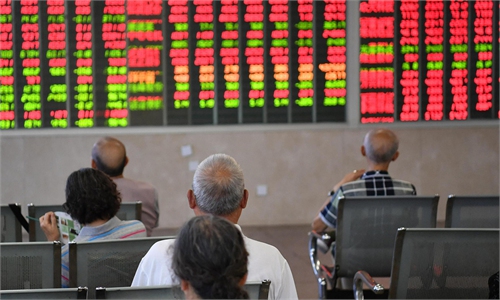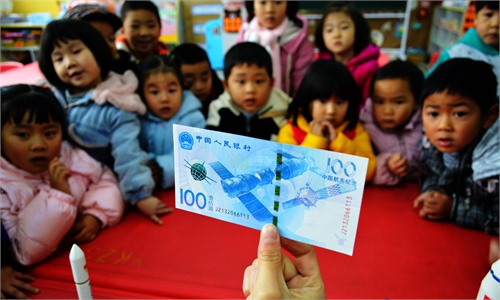
Photo: VCG
On Tuesday, the onshore yuan rate broke the 6.45 mark and hit 6.4303 against the US dollar, the highest level since June 2018. In the first two trading days of the new year, the currency gained about 1 percent in the onshore market after strengthening 6.26 percent against the dollar in 2020.The yuan's recent strong performance has already been a focus of market attention, which many analysts attributed to China's extraordinarily strong economic recovery and social fundamentals.
China is estimated to be the only major economy in the world to achieve a positive GDP growth in 2020. Latest statistics showed that the country's exports, retail sales, and industrial output all continued to make a strong recovery following the attack of the coronavirus in early 2020.
In November, foreign institutional investors increased their holdings of Chinese bonds for a 24th month in a row, according to available data. China and the EU completed negotiations over a bilateral investment treaty, ushering in even greater potential for bilateral economic and trade relations in the near future.
From another perspective, the continuous rally of the yuan may indicate challenges and pressure facing China from other economies. Despite the rollout of vaccines, the year 2021 may still see other major economies facing enormous uncertainties in respect to both containing the COVID-19 pandemic and nurturing economic recovery. Such risks could be reflected in the exchange rates which may be dragged down by the pressures in the coming months.
In the US, the rising infection cases, partisan politics, social divide in addition to the twin fiscal and current account deficits may continue to weaken the attractiveness of the dollar in the new year. As for the UK, the pound's recent performance is an example of how a country's currency has been hit by uncertainty caused by geopolitical and trade environment post-Brexit, as well as its stricter virus lockdown measures. Britain on Monday ordered a new national lockdown in an effort to contain the spread of a more contagious variant of the coronavirus.
It seems that it is the weakness of other currencies that has contributed in large part to the yuan's recent strength.
Even if China manages to maintain its own economic and financial stability, it is still bound to be affected by possible spill-over risks of other economies given the current volatile world markets, and the yuan's rally may be just one manifestation of the impact.
While a strengthening currency represents broader recognition of a country's economic health and capability, it will, inevitably, produce negative effects on the economy and lead to increasingly rising pressure on exports. China is in such a position and it has no other option but to deal with the external risks in a proactive and measured way.
Despite the delicate situation and timing, China's market-oriented exchange rate mechanism reform will not be derailed, and will continue to move forward at its own pace.
In the short term, there is still room for the yuan's appreciation. Even though it may mean more challenges ahead, China has the ability to manage global uncertainty and risks while pushing forward with its currency's reform agenda.



